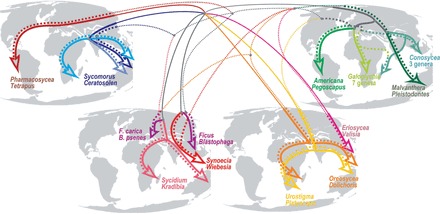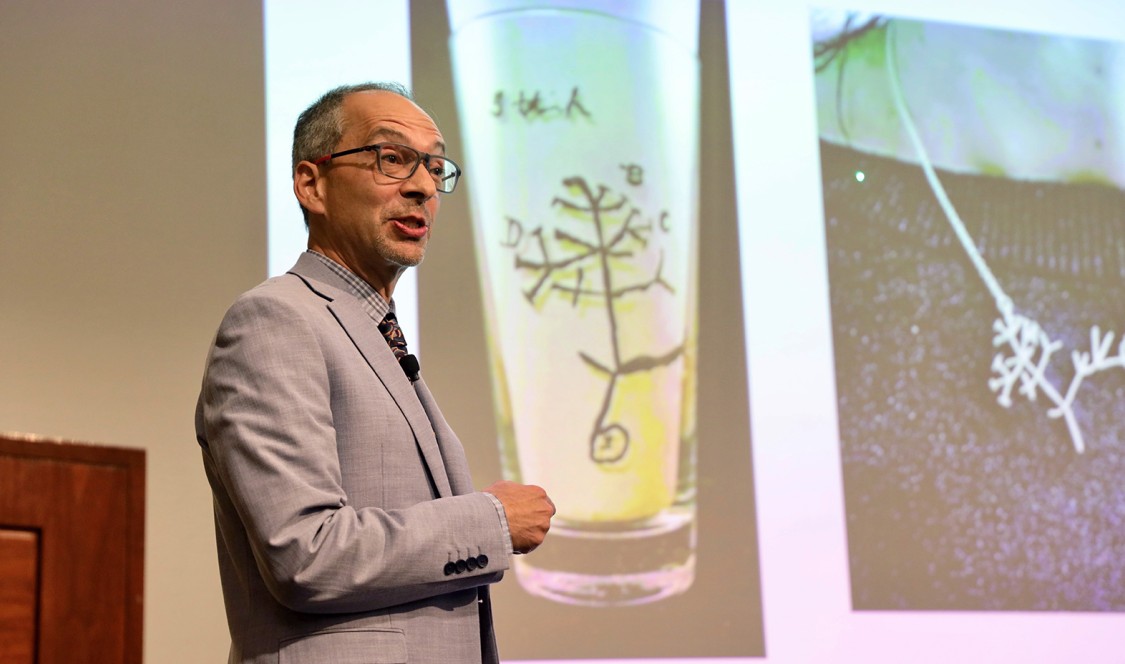CMC Prof. Ran Libeskind-Hadas is a computer scientist who uses computational methods to help solve some long-standing problems in biology – including questions posed by Charles Darwin in the 1830s. If his research explodes a myth about what computer scientists do, Libeskind-Hadas is likely to be pleased. In addition to applying computational methods to evolutionary conundrums, he is also a passionate proponent for the crossing of traditional academic divides.
Libeskind-Hadas is convinced that the world’s toughest problems are best addressed when researchers stretch across disciplines and collaborate to understand and solve them. As the founding chair of CMC’s visionary Kravis Department of Integrated Sciences, he is keen to apply those boundary-breaking principles to the study of the sciences—and more, at the College.
At his Sept. 21 presentation at the Athenaeum, “Charles Darwin Meets Computer Science: How Computation has Led to Fundamental Discoveries in Evolution,” Libeskind-Hadas started with evolution’s original champion: Charles Darwin. Darwin’s seminal work On the Origin of Species introduced the concept of evolutionary trees. These trees, Darwin imagined, could describe how currently existing species can trace their ancestry back to a common ancestor. At the time, Darwin and many of the scientists who followed could only rely on physical characteristics to surmise the evolutionary relationships between species. Though Darwin observed and wrote presciently about evolutionary interactions between pairs of species, such as flowering plants and insects, he didn’t have the tools to research it further.
Enter powerful computers and DNA sequencing techniques more than a century later, and scientists began to much more reliably build the kind of evolutionary maps that Darwin could only have imagined, Libeskind-Hadas explained. Among other discoveries, these new techniques have helped scientists demonstrate that pairs of species, living alongside one another, have exerted selection pressure on each other and have evolved in tandem.
Relying on new algorithmic techniques and the increasing power of computers, Libeskind-Hadas and others have been able to establish, for example, how figs and wasps have co-evolved, nudging one another forward over a period of at least 75 million years, thriving, and radiating out across the continents. Many other breakthroughs underlining the relationships of species have been made using these methods. “It’s the combination of science and computation that has made these discoveries possible,” he said.

From Cruaud et. al. “Codiversification of Figs and Wasps”,
Systematic Biology, 2012
Co-evolution is in many cases mutualistic — the pair of species, such as figs and wasps — both benefit by specializing to one another. This mutualism is also a powerful metaphor for a form of what Libeskind-Hadas called the “science to science” mutualism, which he invoked to describe the vision that inspired the emerging integrated sciences department at CMC, as the most significant developments in science now require crossing traditional disciplinary boundaries.
Further, said Libeskind-Hadas in regard to efforts to build bridges between science disciplines: “We have a special opportunity here to simply never erect those boundaries in the first place and instead organize around a set of “grand challenges” for science and society. CMC’s new integrated science department is organized around three key challenges identified by the National Science Foundation, the National Institutes of Health, and others, specifically: human health, including genomics, systems, and biology; the brain, including learning and decision sciences; and the planet, including climate, energy, and the environment.
With these organizing principles guiding the study of integrated sciences at CMC, Libeskind-Hadas explained, “natural science and computing as a mutualistic system will help to accelerate scientific discovery.” This interdisciplinary approach will prepare students to lead responsibly at critical intersections of scientific and computational discovery, technological application, business, policy, ethics, and several of the College’s other core liberal arts strengths.
Relying again on the study of evolution he introduced the audience to the concept put forward by Harvard evolutionary biologist Stephen Jay Gould and his colleague Niles Elredge called “punctuated equilibrium,” which argues that — in many cases — evolution is not a steady, gradual climb but characterized by long periods of stasis punctuated by periodic epic events that hasten it.
The new integrated sciences department is, Libeskind-Hadas suggested, just that sort of accelerating event, and will give rise to “confident, fearless, problem solvers.”
The groundbreaking for the the Robert Day Sciences Center, home to the new Kravis Integrated Sciences Department, is scheduled for Friday, Sept. 30 at 1 p.m. in the Bauer East Parking Lot, as part of the ImpactCMC 2022 program.
Graphic: Copyright © The Author(s) 2012. Published by Oxford University Press, on behalf of the Society of Systematic Biologists. All rights reserved.

